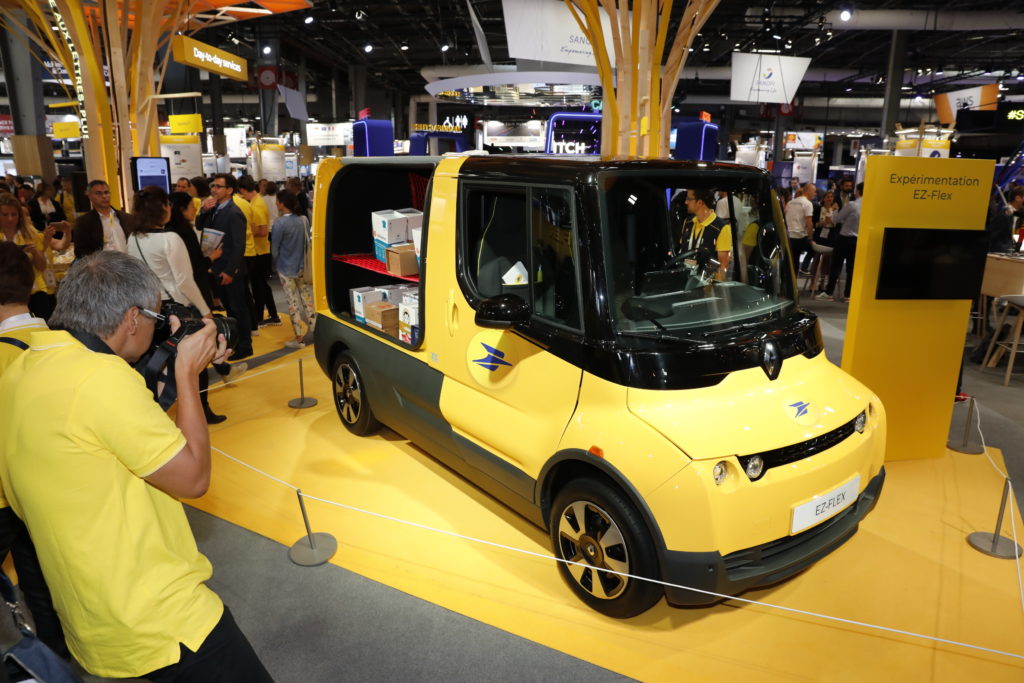Many posts are investing in electric vehicles for the last mile. Has the technology caught up with operational requirements? What about costs? Tomasz Gać and Marek Różycki (Last Mile Experts) analyze the market
La Poste recently announced it will trial a new style of electric delivery van from Renault. This is the latest sign that postal and parcel operators are looking to an electric future in the last mile.
Only a few years ago, zero-emission deliveries in cities did not exist at any scale. They were only possible via bicycle couriers, which were limited to the capacity of the backpack.
From 2011, things started to change. The first popular electric vehicle (EV) – the Nissan Leaf – reached dealerships. Soon, electric versions of small commercial vehicles like Renault Kangoo Electric or Nissan eNV200 were launched. However, at that time there was little wider knowledge of EVs among last-mile experts, or even among fleet managers.
But things are changing – and changing fast. There’s a growing choice of electric vehicles suitable for the last mile which, when combined with external factors detailed below, mean that we’ll soon see more EVs on the streets.
External factors
Low-emission zones in cities like London or Berlin, as well as state and local regulations, will gradually force carriers to deploy more and more electric vehicles to their fleets. This is supplemented by price subsidies and even some free charging points in cities such as Hannover or Amsterdam.
The growing environmental awareness of urban communities will give rise to customer pressure on courier and postal services, as well as at online stores where they make purchases. This is already often seen among health food stores or other organic product sellers. It is only natural that customers ordering such products are more likely to buy from online stores offering zero-emission deliveries, especially if it does not cost more.
EVs are better than conventionally powered vehicles for noise levels and air quality in the city centers where millions of people live and work. Good examples can be found in more ecologically minded cities such as Rotterdam in the Netherlands.
Internal factors
But on top of the external benefits, EVs offer other advantages. In the drive system of a typical car with an internal combustion engine (ICE) there are over 2,000 moving parts, whereas EVs have only 20-30 in the electric drive – leading to lower maintenance costs and simple repairs.
Perhaps more importantly a typical charge cost (where free charging is not available) will be a fraction of fuel costs and can be as low as 20% of comparable fossil fuel costs. Looking at it in traditional terms, EVs give efficiency equivalent to 1 liter of fuel per 100km (62 miles)!
Finally, EVs can be more comfortable for drivers on short distances because they’re quick to start, virtually silent, and smooth to drive. Full engine power is accessible from 0km/h. All these features show EVs are perfect for urban driving.
So why is the last mile not yet all-electric?
There are also some obstacles, both subjective and objective.
The most important one is related to relatively higher prices of electric vehicles compared with their traditional counterparts, typically costing 50% more. Having said that, more and more countries are offering subsidies of as much as 30%, which can compensate part of this difference.
Another issue concerns insufficient charging infrastructures. Few cities have sufficient charging points to give proximate access today and, should the number of EVs grow, this situation will only be worse. But this is more of an issue for private use, where people have no possibility to charge at home or at work.
If we talk about last-mile deliveries or generally corporate use, most companies – with a little help from experts – are capable of implementing EVs on sufficiently long routes, while avoiding the need to charge during the day.
Finally, and most importantly, there is very little availability of suitable electric delivery vehicles, especially at the lower-priced end of the market. Today, only a few models are available to a limited extent in Europe and the USA. The StreetScooter, owned by DHL, has several shortcomings such as no possibility of fast DC charging and a loud and poorly finished cabin, but still the parent company is planning to increase their number this year from 9,000 to 15,000 at a cost of about €40,000 (US$44,800) each. La Poste uses Renault Kangoos; however, like the Nissan eNV200, these are quite small vehicles (about 4m3 (141ft3) of cargo space) and not adapted to the expectations of fleet managers in a typical CEP company. Compare that with the Nissan Voltia’s 8m3 (282ft3) cargo space. DPD France (a 100% subsidiary of La Poste) is now testing over 100 of these vehicles. Similar tests of the Voltia are being run by DHL France, in Paris.
But watch this space – a new wave of improved electric delivery vehicles is coming. Currently, selected large companies can already test (or buy in small quantities) slightly more expensive German last-mile EVs, such as the Mercedes eVito and Volkswagen eCrafter. These vehicles have the advantage of being supported globally by major car producers, with a dense service network and long-term relations with fleet managers. Some more or less successful Chinese EVs have been available for some time and while the price is very attractive, not all offer reliable quality or have full EU homologation.
Conclusion
Taking into account the growing social awareness and billion-dollar investments by automotive concerns into battery technology, we believe that it isn’t a question of ‘if’ but ‘when’ EVs become the powerhouse of last-mile deliveries. Those who learn about them now will be in prime position to take advantage of this change when it comes.
 Thomasz Gać advises clients such as courier companies on implementing EV fleets, drawing upon his vast experience as a business owner and consultant in the sector. He is a PRO Partner at Last Mile Experts.
Thomasz Gać advises clients such as courier companies on implementing EV fleets, drawing upon his vast experience as a business owner and consultant in the sector. He is a PRO Partner at Last Mile Experts.



